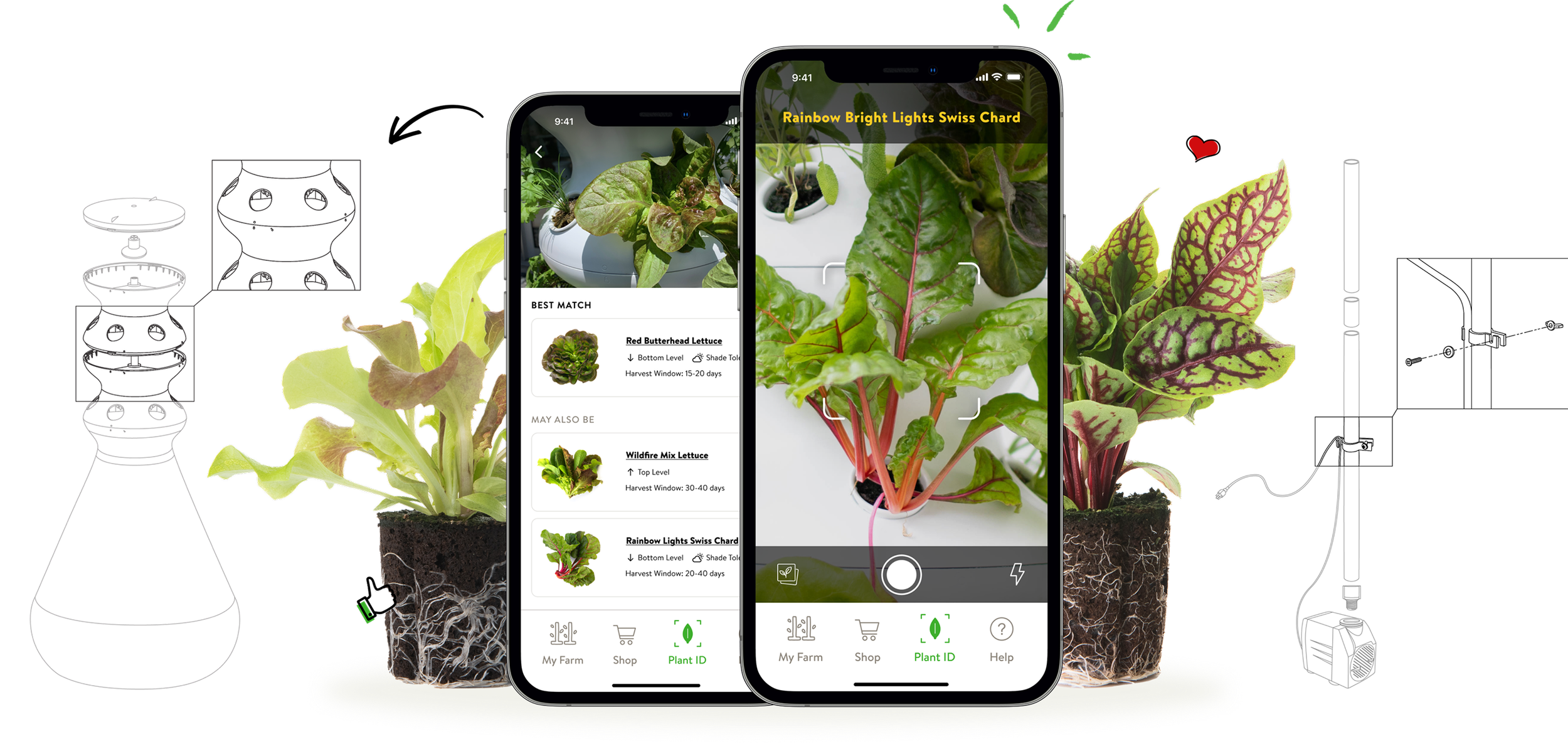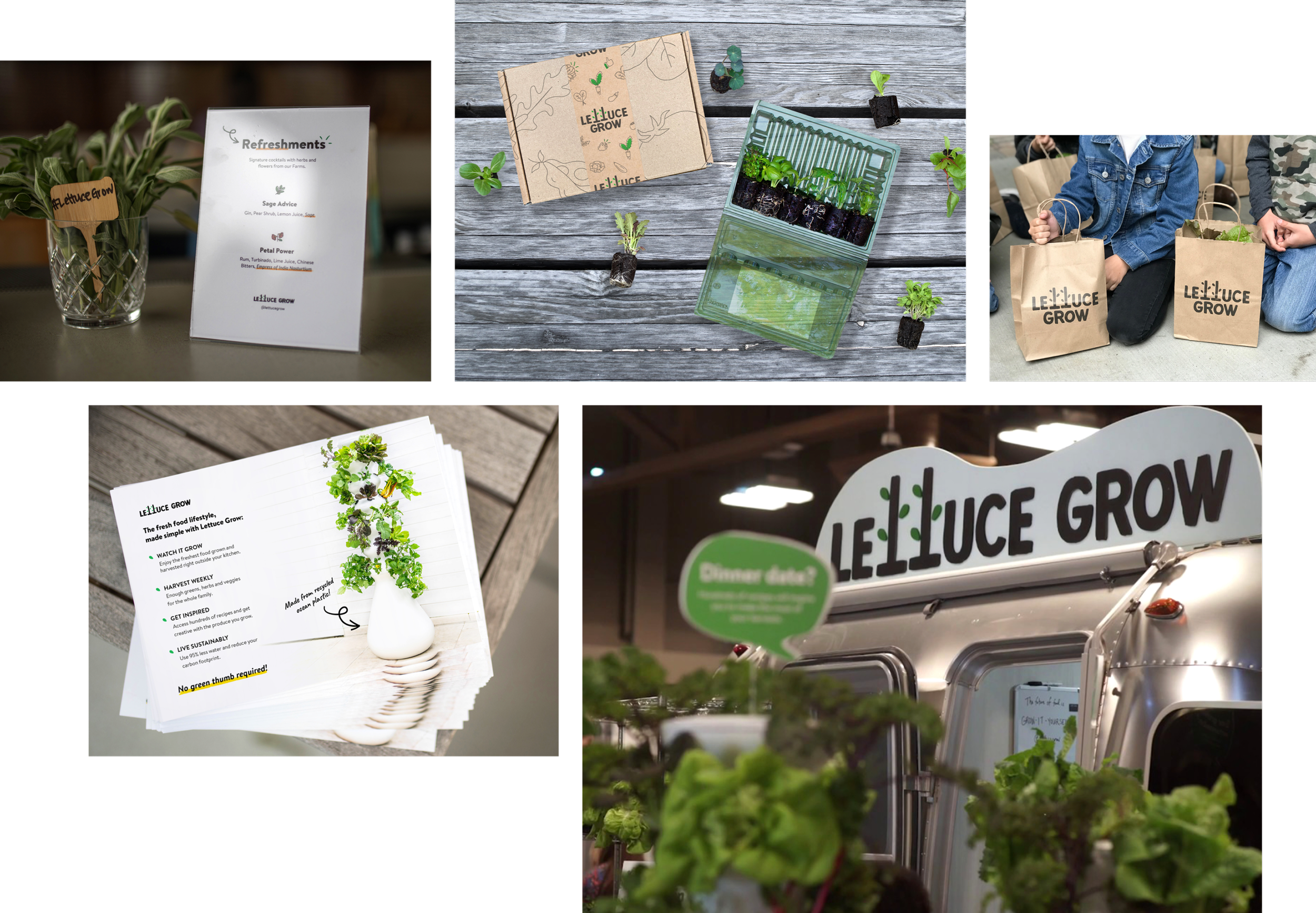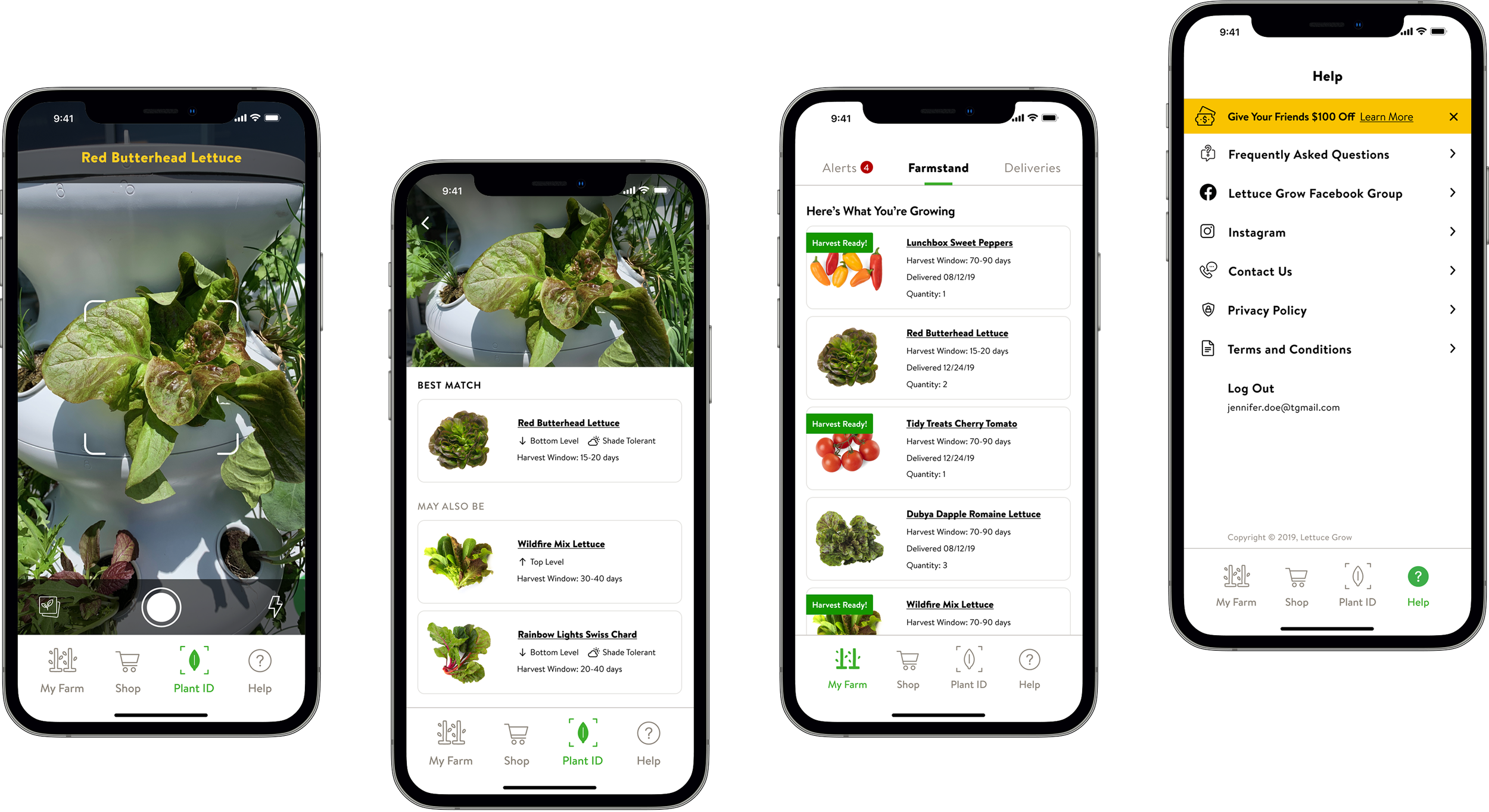Lettuce Grow
Crafting a Consumer-First Brand Identity & Platform
Lettuce Grow revolutionizes home gardening with its innovative hydroponic growing system, the Farmstand. Originally launched as a B2B company, Lettuce Grow served a variety of institutional clients across California and Texas, including California State University, Long Beach. Recognizing the untapped potential of the consumer market, the company embarked on a bold transformation to become a direct-to-consumer (D2C) brand.
As one of only two designers on the team, I played a key role in supporting this transformation, contributing across multiple domains, including packaging design, brand illustrations, marketing campaigns, and even the development of an augmented reality (AR) app for plant identification. This case study delves into my contributions to Lettuce Grow's rapid and successful pivot.
Project Overview
Roles & Duration
Branding
UX/UI Design
Illustrations
15 months
Primary Tools
Figma
Adobe Illustrator
Procreate (iPad)
Lettuce Grow’s pivot to the consumer market brought both opportunities and challenges. While the Farmstand’s accessibility and eco-friendly appeal made it a strong candidate for a direct-to-consumer product, the company faced hurdles, including:
Transitioning from B2B to D2C
Building a Consumer-Ready Brand: The existing B2B identity needed to evolve into a compelling, consumer-focused brand that resonated with a broad audience.
Generating Awareness and Demand: Unlike the institutional sales approach, the D2C model required a more engaging, marketing-driven strategy to build interest and anticipation.
Designing Holistic User Experiences: From packaging to digital platforms, every consumer touchpoint needed to reflect Lettuce Grow’s mission of empowering individuals to grow their own food effortlessly.
Designing for a Seamless Transition
As a designer, I contributed to Lettuce Grow’s successful D2C pivot through a multifaceted approach that encompassed branding, marketing, product design, and user experience. A critical component of this transition was the "Waitlist" campaign, which generated excitement and early interest ahead of the consumer launch. Through a combination of a streamlined online form, print collateral, and social media ads, we cultivated over 200 signups within 24 hours and grew a strong base of engaged early adopters over the campaign’s month-long duration. The campaign assets emphasized approachability and sustainability, aligning with Lettuce Grow’s mission to make sustainable farming accessible to everyone.
To support the new D2C strategy, I played a key role in designing a consumer-facing website that blended education and e-commerce. The website served as both an information hub and a seamless shopping platform, offering engaging visuals, concise tutorials, and an intuitive purchasing process. Special attention was given to mobile optimization to ensure accessibility across devices, which was essential for engaging a tech-savvy, on-the-go audience.
“Through innovation and thoughtful design, we empowered individuals to embrace sustainable farming and grow their own food effortlessly.”
The transition also required a refreshed brand identity that would resonate with individual consumers. I developed eco-friendly packaging that reflected Lettuce Grow’s commitment to sustainability while being practical and user-friendly. Instructional materials were designed to guide new users through assembly and maintenance, ensuring a positive and empowering first-time experience.
To enhance the overall product offering, I collaborated on the design of an augmented reality (AR) app that allowed users to identify plants and receive tailored care tips. This innovation complemented the Farmstand by providing a digital tool that supported customers in their gardening journey, reinforcing Lettuce Grow’s mission to empower individuals to grow their own food.
This holistic design strategy ensured a seamless and engaging experience at every consumer touchpoint, helping Lettuce Grow establish itself as a leader in the D2C hydroponics market.
The success of Lettuce Grow’s pivot to D2C was driven by a holistic design approach that ensured a seamless and engaging consumer experience across all touchpoints. The "Waitlist" campaign exemplified this effort, generating immediate interest and attracting hundreds of early adopters, which laid the groundwork for a strong launch.
By creating approachable packaging, intuitive instructional materials, and an innovative AR app, we empowered consumers to feel confident and excited about growing their own food. As one of only two designers, I worked across disciplines, demonstrating the value of adaptability and collaboration in driving meaningful business transformations. Together, these efforts underscored the critical role of thoughtful design in enabling Lettuce Grow’s mission and success.
Main Takeaways
“By creating approachable packaging, intuitive instructional materials, and an innovative AR app, we empowered consumers to feel confident and excited about growing their own food.”
An important aspect of this experience is that, despite the company's complete rebrand—from a fun and quirky identity to a sleek, tech-forward aesthetic—the UX design principles, tone, and foundational elements I developed for both the app and website remain intact. These core aspects continue to shine through, even with the new logo and updated brand styling.
Explore More
Here are a few more case studies you might find interesting.
Lucid Motors
Designing the Future of In-Car Infotainment: From Concept to Production
Northern Trust
Designing a Scalable UI Library in Adobe Experience Manager
Škoda Auto
Innovating Auto Configurators with UX-Driven Design and AR Capabilities
Nacero
Creating a Brand & Digital Experience for Next-Gen Gasoline
Faraday Future
The Future of Touch: Designing for a Screen-First Car Interior
Lettuce Grow
Crafting a Consumer-First Brand Identity & Platform






